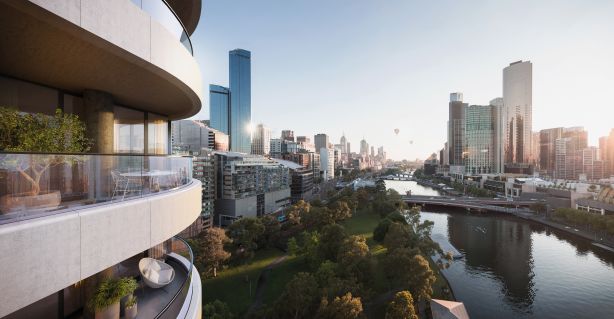Source: Domain.com.au
As affordable housing becomes the real issue, will the requirements on developers to provide larger percentages of affordable housing become the norm? Allison Worral writes about just that.
Victorian planning minister Richard Wynne has approved a triple-tower complex of 700 dwellings, after the developer agreed to include 20 affordable units.
The $800 million project, at the Spencer Street site of the former convention centre, will include more than 500 apartments and 168 luxury hotel rooms in two 26-storey buildings and a 33-storey tower.
While the agreement has been lauded by some as a landmark deal between the public and private sector, some have criticised the state government for accepting an offer which translates to less than 4 per cent of the development handed over to affordable housing.
Century Group Aus bought the 7250-square metre block in 2016 for $97 million. Although it came with a permit for 1060 apartments, the developer submitted amended plans — designed by Melbourne-based architects Fender Katsalidis — for fewer, but larger, units.
The new proposal, dubbed Flinders Bank, was recently rejected by the Melbourne City council for overshadowing part of the Yarra river.
But it won state government approval on Tuesday after former property developer turned affordable-housing advocate Robert Pradolin negotiated a deal with the board of Century Group Aus to include 20 affordable homes.

The development is at 7-23 Spencer Street, the former site of the convention centre.
Under the agreement, the units will be leased at 50 per cent below market rate for the lifespan of the building.
“It is a pretty substantial milestone to enable a private sector initiative to deliver low-income and key-worker housing,” Mr Pradolin said.
But others saw it as a missed opportunity.
“You can understand the developer making an offer of less than 5 per cent [affordable housing], but for the government to accept it is embarrassing,” said Kate Shaw, urban geographer at Melbourne University.
“In most European cities, in a development of that size, 30 per cent would be affordable housing.”
Dr Shaw said inclusionary zoning must become mandatory to deal with a ”total crisis” in housing affordability.
There are no minimum requirements for new developments in Victoria to include affordable housing, which is defined as being appropriate for those on moderate, low and very low incomes.
However, the state government recently introduced new legislation that aims to make it easier for developers, councils and government to negotiate voluntary agreements.
Rather than sell the 20 apartments to community housing associations, it is expected that Century Group Aus will sell the units individually to investors at a reduced price to reflect the lower rental return.
Mr Pradolin admitted that 20 units was a small proportion of the total.
“It is not that much, but the importance that must not be overlooked here is that there was no requirement,” he said.
“I see this as a catalyst opportunity … Other developers will hop on board and deliver a whole range of key-worker housing.”

Mr Wynne said: “This will provide new apartments for city-dwellers, accommodation for tourists and affordable homes under our new rules that encourage the provision of affordable housing as part of new developments.”
Century Group Aus executive director, Connie Wu, said the state government’s decision was an example of how public and private interests could work together.
“This is an important milestone for property development and affordability in Melbourne,” Ms Wu said.
She added that the overshadowing caused by the buildings was minimal, only taking effect in the middle of the river in the middle of winter.
Construction is expected to begin next year and finish by mid-2021.
